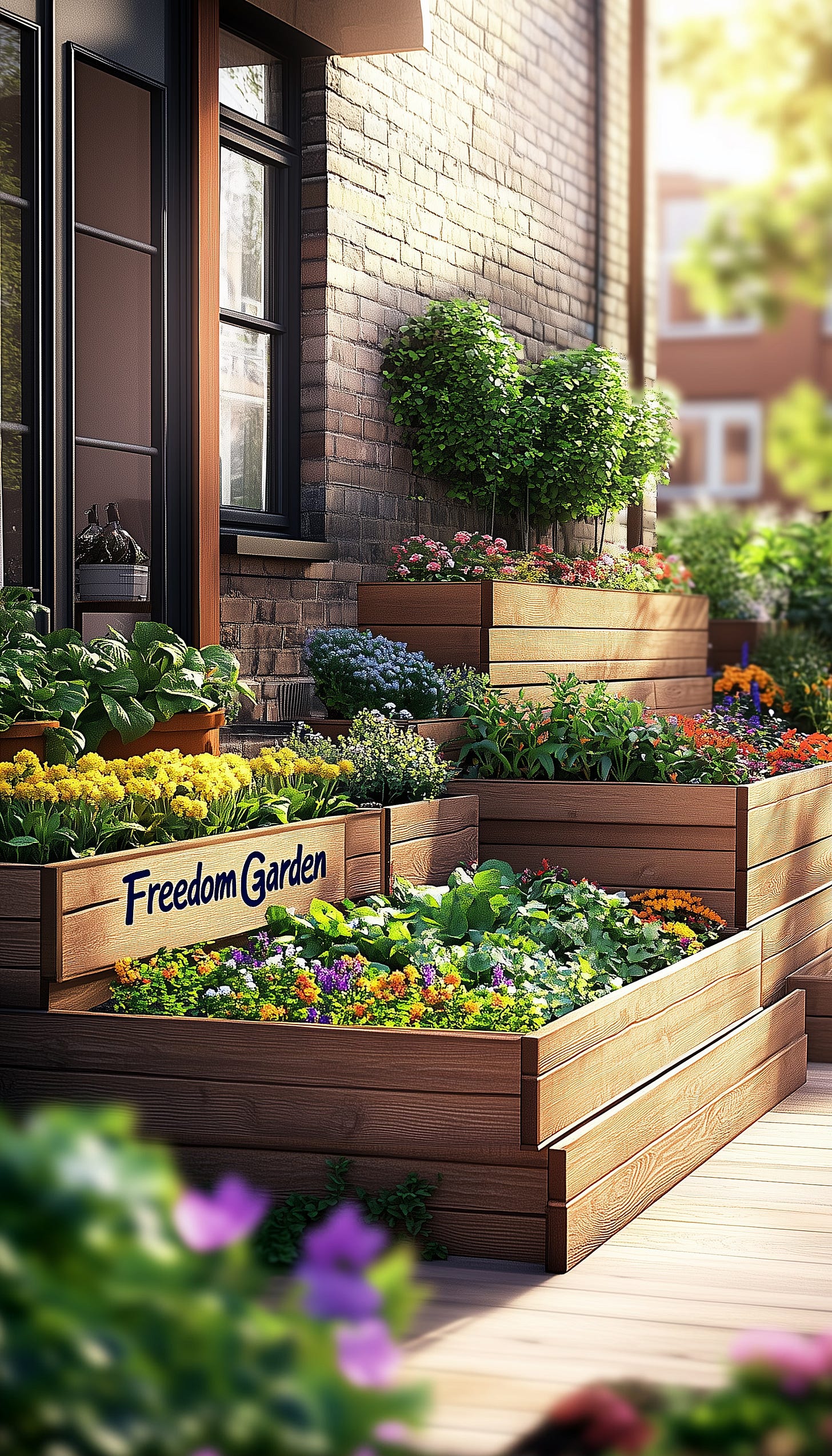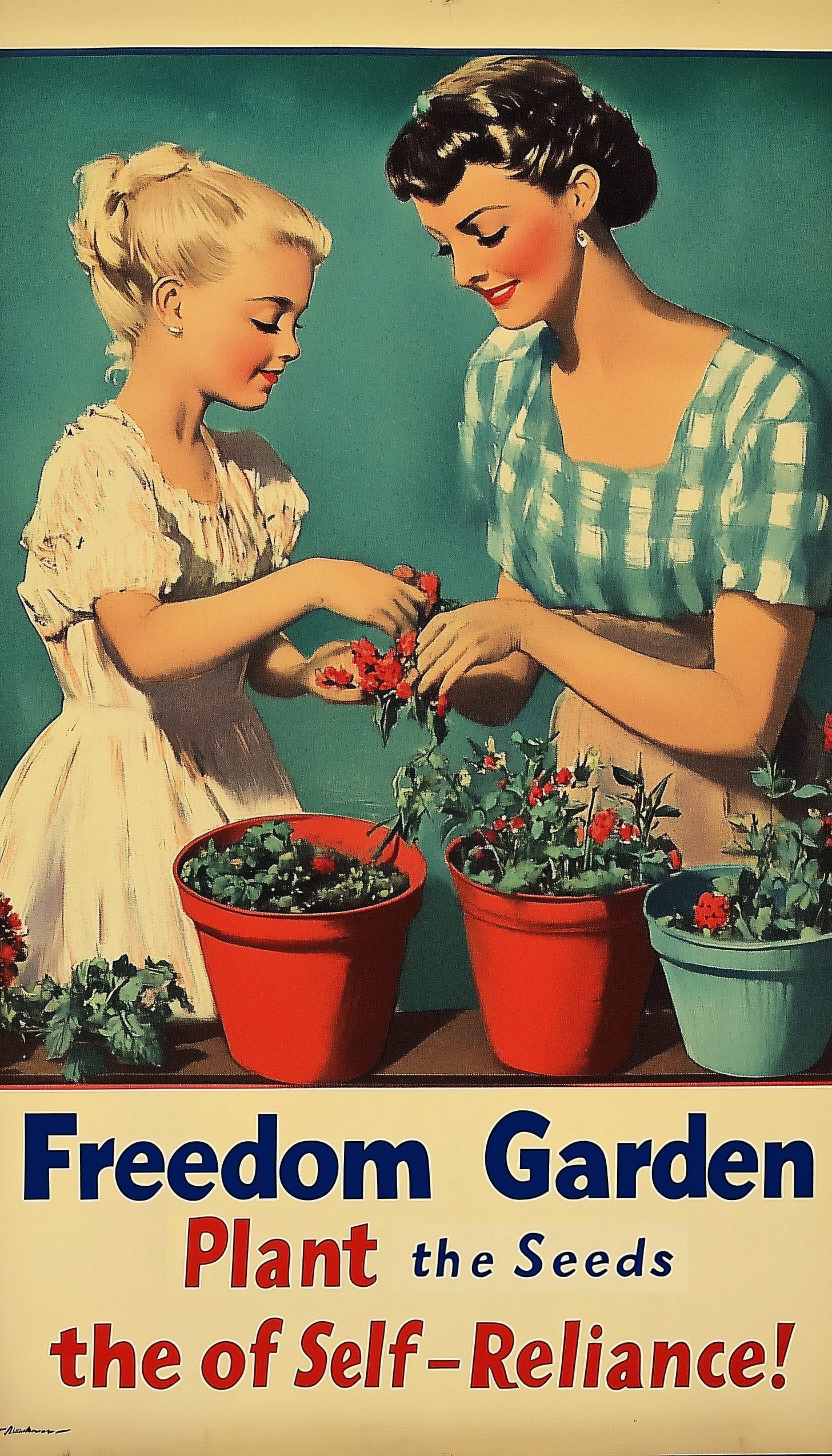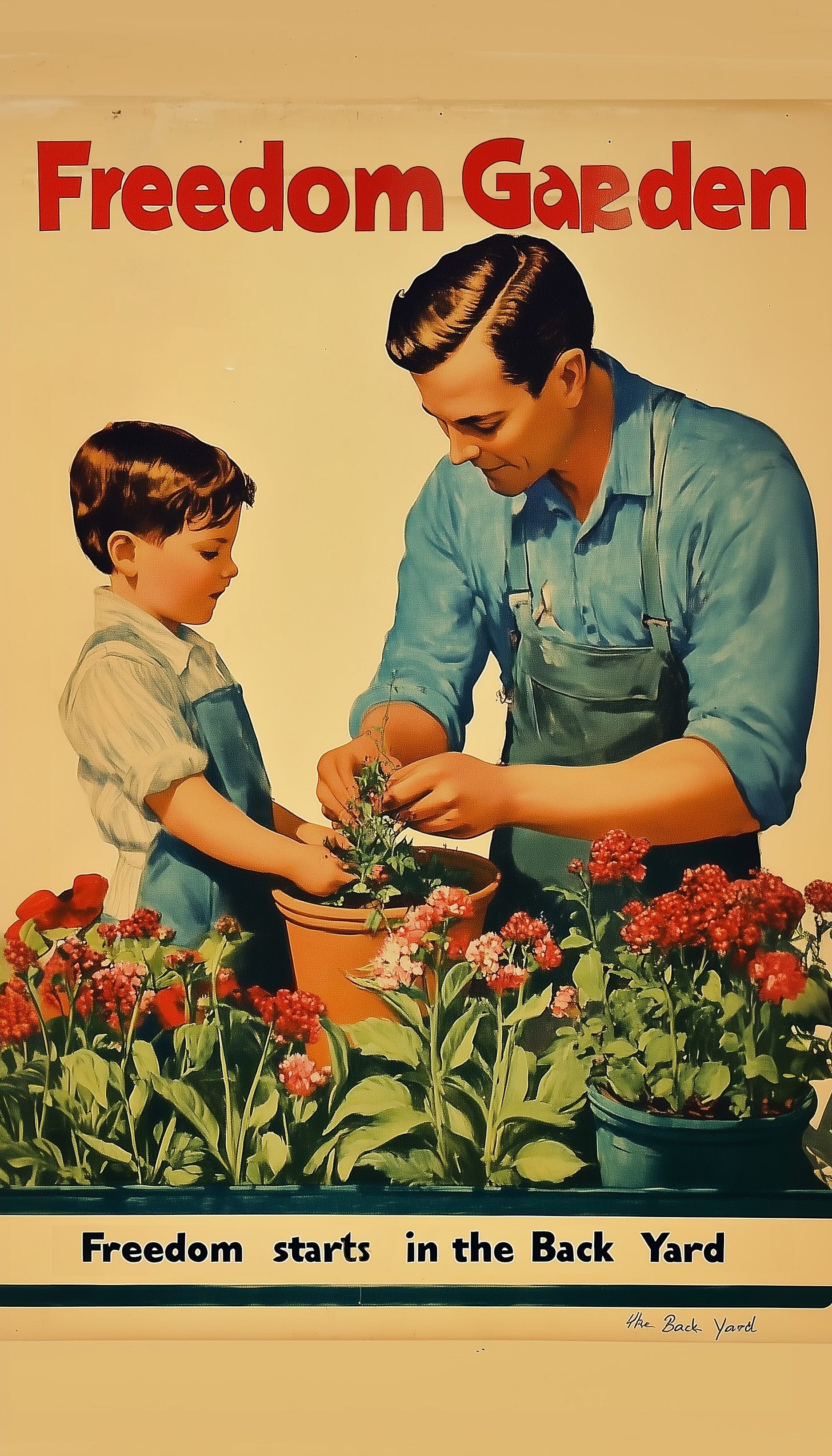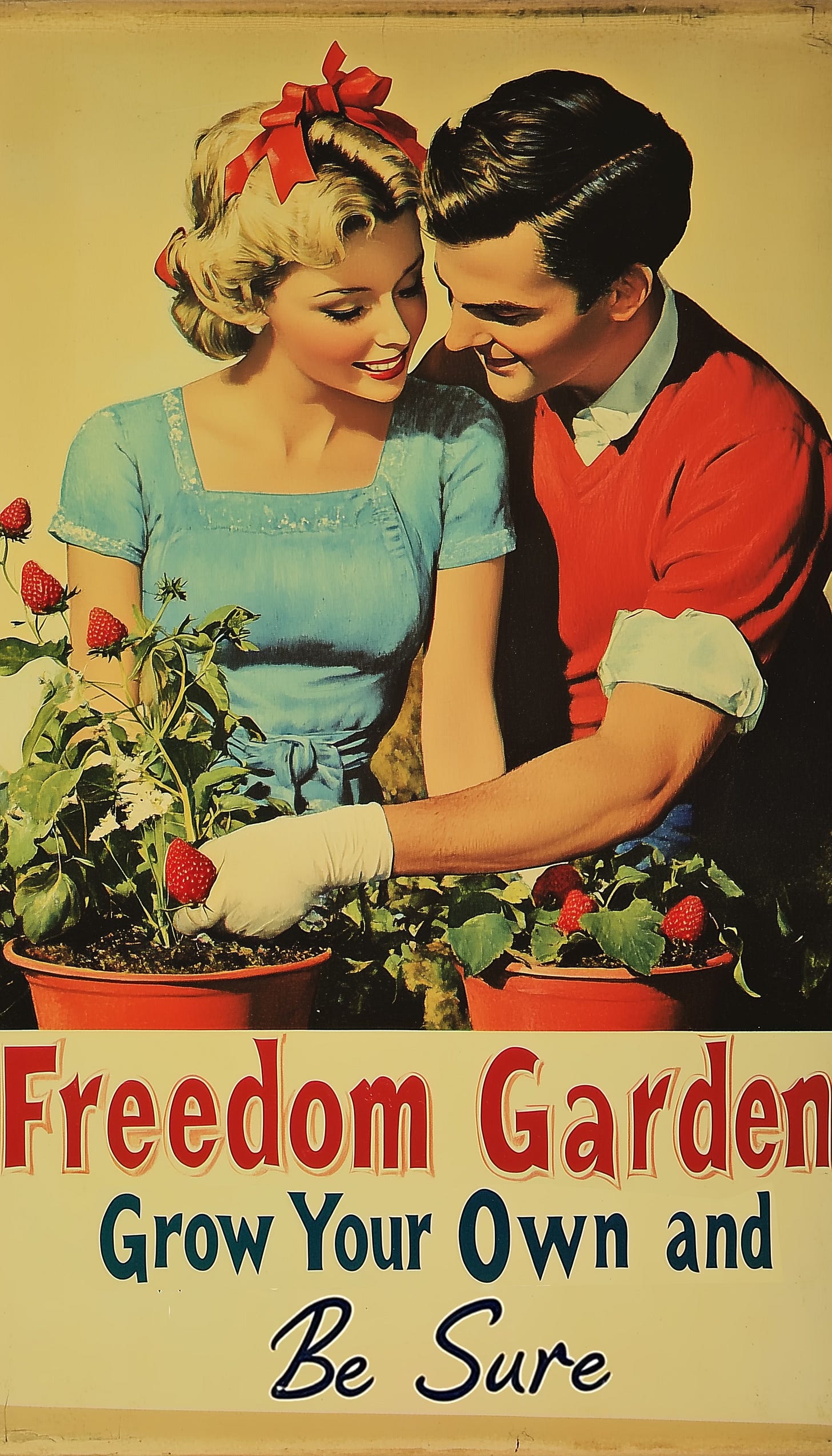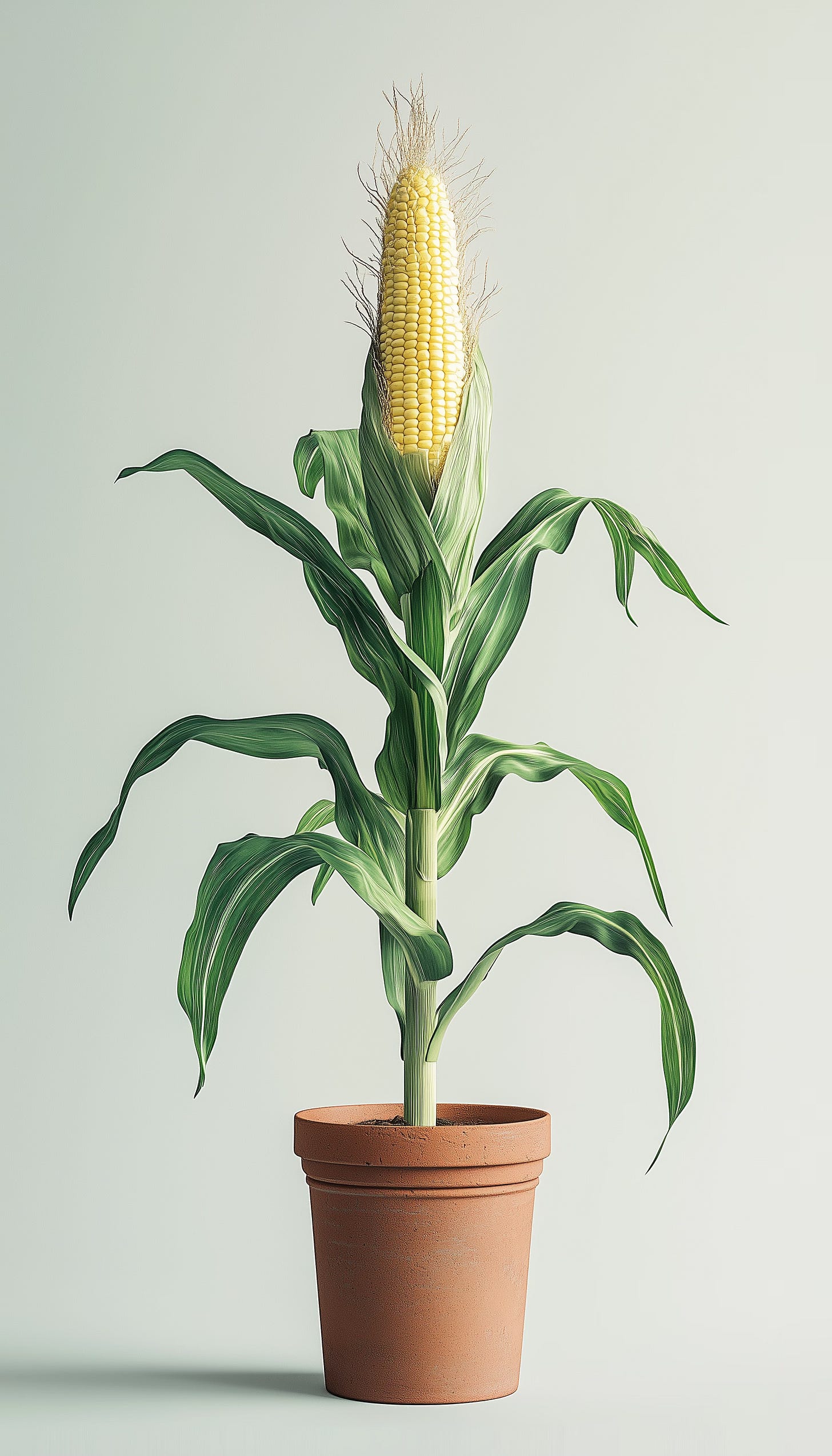Freedom Gardens: The Modern Victory Garden for Self-Reliance and Sustainability
In the face of rising grocery prices, supply chain concerns, and a growing desire for sustainable living, Freedom Gardens offer a modern twist on the Victory Gardens of the past. Just like Victory Gardens helped communities through wartime by encouraging homegrown food, Freedom Gardens empower individuals to reclaim a sense of control over their food supply. Whether you're working with a large backyard or a small balcony, cultivating a Freedom Garden is an accessible way to foster self-reliance and connect with your community.
Why Start a Freedom Garden?
Here are five key benefits of planting your own Freedom Garden:
Resilience in Uncertain Times
Growing your own food reduces reliance on supply chains that may be affected by economic instability, environmental challenges, or geopolitical tensions. By cultivating even a small garden, you gain peace of mind knowing you have fresh produce on hand.Reduced Grocery Costs
While container gardening may not yield enough to replace your weekly shopping trip, it can provide fresh herbs, greens, and even staple crops like tomatoes and peppers. Every homegrown item reduces your grocery bill and provides access to organic produce without the premium price tag.Sustainability and Environmental Benefits
Urban gardening reduces the carbon footprint tied to food transportation. Plus, using compost and organic practices further enhances soil health and reduces the need for chemical fertilizers.Encourages Community and Sharing
Freedom Gardens inspire connection through resource-sharing and local produce exchanges. Even if your yields are small, sharing extra herbs or fresh tomatoes with neighbors can foster stronger community ties.Mental and Physical Well-being
Gardening offers a therapeutic escape, providing mindfulness benefits while keeping you physically active. The satisfaction of nurturing plants and watching them thrive is incredibly rewarding.
Growing Corn in a Container: A Space-Saving Solution
While corn is traditionally grown in large plots, it's possible to cultivate a small yield in a 12" diameter terracotta pot. Though not ideal for maximizing yield, this method can still be rewarding for those with limited space. Here are some tips for success:
Choose dwarf or compact corn varieties that are better suited for containers.
Use rich, well-draining soil and add compost for added nutrients.
Water consistently; corn is thirsty and requires steady moisture.
Consider using a deep pot (at least 12 inches deep) to allow the roots to expand.
Since corn is wind-pollinated, plant 3-4 pots in a cluster to improve pollination.
Container Gardening for Small Spaces
If you’re limited on space, here are some other ideas to maximize your Freedom Garden:
Vertical Gardening: Use stackable planters, trellises, or hanging baskets for crops like beans, peas, and strawberries.
Herb Gardens: Compact herbs like basil, cilantro, and thyme thrive in small pots and offer continual harvests.
Self-Watering Containers: These minimize maintenance while ensuring your plants receive consistent hydration.
Pollinator-Friendly Plants: Including flowering plants like lavender or marigolds attracts bees and butterflies to improve fruit and vegetable yields.
Bringing Activism Into Your Garden
Freedom Gardens align with the spirit of activism by promoting urban gardening, self-reliance, and community sharing. Growing your own food allows you to push back against the rising costs of groceries and potential disruptions in supply chains. Sharing your harvest with neighbors or participating in local seed swaps can create powerful networks of support and resilience in your community.
By embracing the Freedom Garden movement, you can cultivate not only fresh produce but also independence, sustainability, and stronger connections with those around you. Even with limited space, your efforts can bloom into something meaningful and impactful for you and your community.





